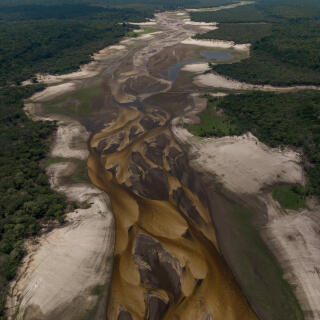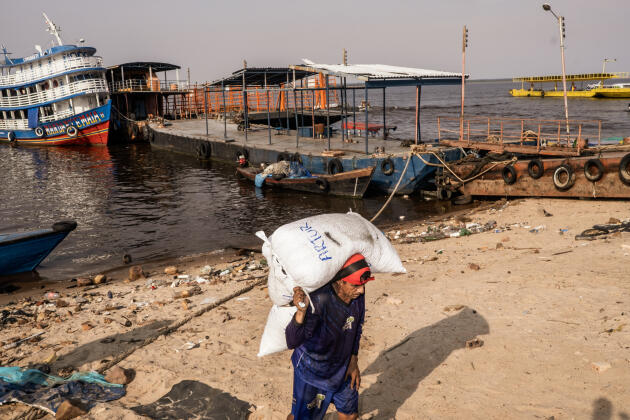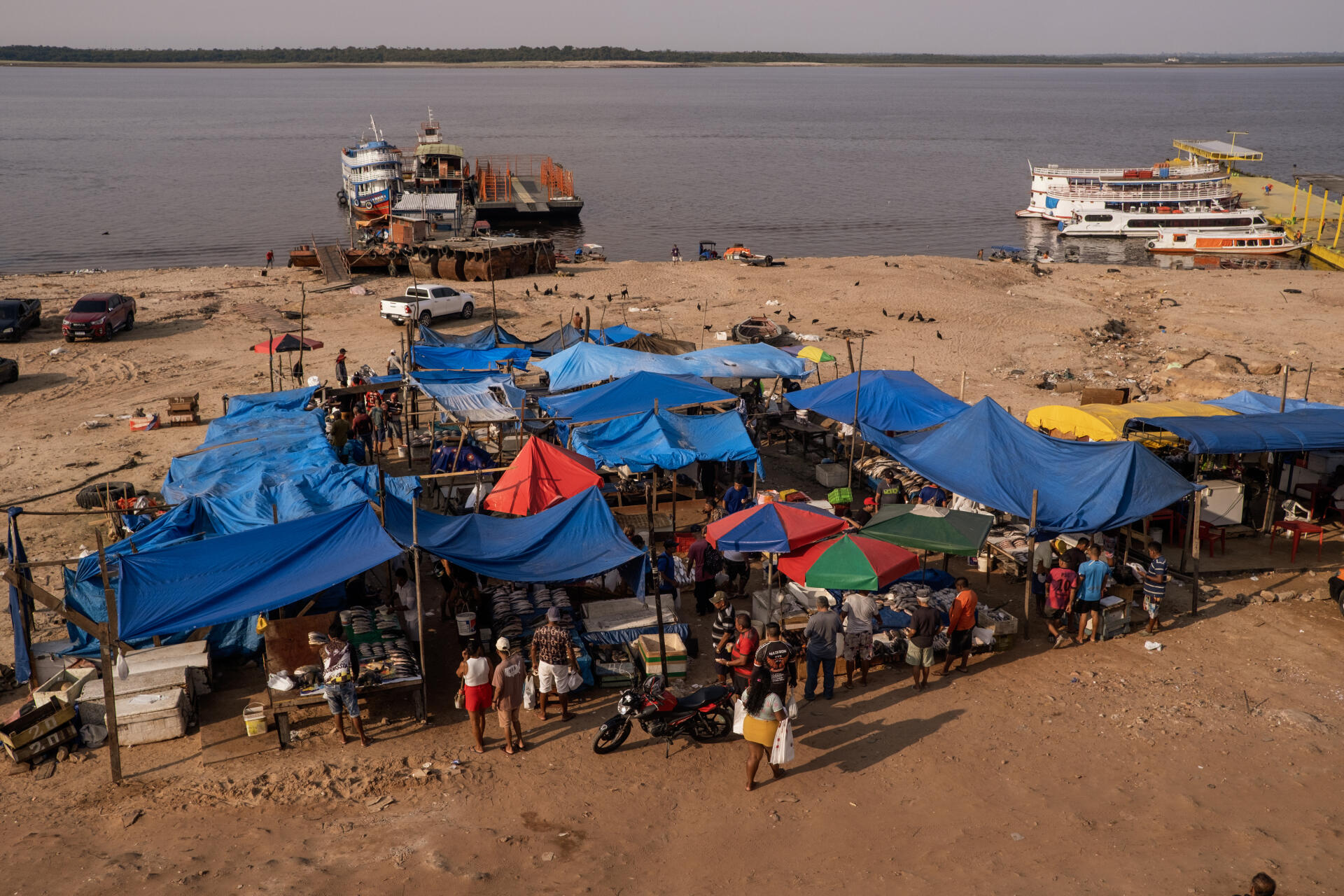


On the Amazon's Rio Negro, a historic drought brings life to a standstill
FeatureThe Rio Negro, one of the main tributaries of the Amazon River, has reached its lowest level in 121 years. It's creating a punishing predicament in the daily lives of the people living along its banks.
In the port of Manaus, the capital of Amazonas, the ships that usually serve the state's various cities appear to have vanished. They're only visible when standing near the yellow barrier that runs beside the grey asphalt quay. The ferries, ships and small tourist boats have been moored to metal piers 200 meters away. The drop in water level along the Rio Negro, a main tributary of the Amazon River, has created a long beach of yellow sand where garbage deposited by the receding waters has accumulated.

After unloading their wares, fruit and vegetable vendors then have to cross the strip of sand, their heavy loads in white canvas bags on their backs, before they can sell the goods at the Manaus market, which lines the port. The trek has deterred some of the fishermen, who have instead improvised a small makeshift market on the "new" bank, covering their stalls in blue plastic tarps to protect themselves from the blazing sun.
"We're at a standstill because of the drought," said Dhion Clyve, 20, a deckhand on the Zé Holanda ferry. This double-decker vessel, which carried some 200 passengers each week to the town of Novo Aripuana, 300 kilometers to the south, has been docked for two weeks. "A lot of ships run aground on rocks or in the mud," said the dark-eyed employee sporting a sparse beard, as he lay swinging on a hammock suspended between two columns.
A drop of 10 centimeters per day
Beginning in June, the weather phenomenon known as El Niño, which causes lower rainfall amounts, together with a warming trend in the North Atlantic Ocean, set in motion a "historic drought" in the Amazon, said Renato Senna, 61, a meteorologist with the National Institute of Amazonian Research.

The Rio Negro's water levels, which have been measured daily at the port of Manaus, have been dropping at the "alarming" rate of 10 centimeters per day, the scientist articulated, clearly concerned. In September, its rate of decrease reached 30 centimeters per day. While the river had already climbed to 30 meters at the port, causing flooding, it dropped to 13 meters and 59 centimeters on October 16, "the lowest level recorded in the past 121 years."
In the Amazon, 95% of the transport of people and goods is by river. According to the Amazonas state prefecture, which had placed 59 of 62 municipalities under a state of emergency, 633,000 people were being affected by the drought. Per Manaus city officials, 54 riverside communities had become isolated. "Access to our village is becoming more and more difficult," said William Soares Mendes, 35, president of the Tumbira community, which has 45 families and is located on a branch of the Rio Negro, 60 kilometers northwest of Manaus.
You have 75% of this article left to read. The rest is for subscribers only.
